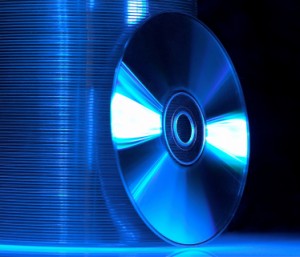When making many copies of a disc, often it is easier just to hire a professional company to do it for you as it saves you time and, in the long run, money. But there are two different ways of making multiple copies of CDs and DVDs: The first is disc duplication and the second is disc replication. The two are not altogether foreign, but there are some subtle differences which can make a massive difference to which one is better suited to your needs.
The process behind disc duplication involves burning CDs or DVDs the way you would at home, in a disc burner using a laser. However, professional equipment is such that it can burn many copies of a disc at once, using disc burning towers. This makes the process much faster than it would be at home. The discs are then decorated and checked for quality in special machines.
On the other hand with disc replication, CDs or DVDs are copied using a master disc made from glass. This master disc literally punches the digital information onto the disc before the protective layers are added. It thus becomes part of the entire disc manufacturing process.
Although the initial costs of disc replication are more expensive because the glass master has to be made, if you want to make more than 1,000 copies of a disc it is actually cheaper than duplication. But duplication is much faster than replication: Duplication can take from 24 hours to three days, while replication takes between seven and ten days on average.
Also, the type of discs which can be made in both processes differ significantly: Disc duplication will only deal with CD-Rs or DVD+/-Rs, while replication is only for CD-ROMs or DVD-ROMs and also now Blu-Ray discs. This is because CD- and DVD-ROMs cannot be burnt upon and CD-Rs have been taken too far down the  manufacturing process to then be stamped with the replicating machines. This seems trivial, but it can have a slight difference to which disc players can read them: It is estimated that in the current market that only 98% of CD players will play duplicated CDs while 90% of DVD players will play duplicated DVDs. This could have an effect on your decision: If you need to be able to guarantee your customers will be able to play your product, it is better to replicate the discs! This is because of the way that data is read from the different discs.
manufacturing process to then be stamped with the replicating machines. This seems trivial, but it can have a slight difference to which disc players can read them: It is estimated that in the current market that only 98% of CD players will play duplicated CDs while 90% of DVD players will play duplicated DVDs. This could have an effect on your decision: If you need to be able to guarantee your customers will be able to play your product, it is better to replicate the discs! This is because of the way that data is read from the different discs.
Aside from this, there are no real differences in appearance of the discs or the quality of data stored, though it should be noted that duplicated discs can be a little more susceptible to UV damage than replicated discs but this technicality is so slight it only really counts if you are planning on making your disc last more than thirty years!
Good luck with all your duplication and replication and I hope this article has helped you on the way to making your mind up on which is better suited to your needs. Just remember that the most important thing in the decision-making process is simply how many discs you are planning on creating: The basic rule is over a thousand, you replicate, under a thousand, you duplicate!
